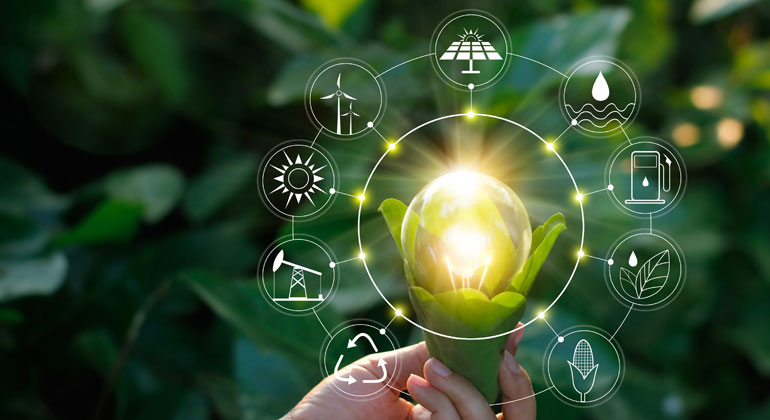All roads lead to electricity
‘After the triumph of renewable energies, the next energy revolution is now emerging, largely unnoticed by the public: ‘Soon there will be solar power even at night, and wind power when there is no wind,’ writes Spiegel columnist Christian Stöcker.
This also eliminates the ‘argument’ often used by critics: ‘The sun doesn’t shine at night. And where should the electricity come from when there’s no wind?’ But more and more large-scale storage facilities are being built for times of ‘dark doldrums’.
An example: Lakal, a shutter manufacturer based in Saarlouis, already produces a large proportion of its electricity itself using a large PV system on the roof. To be able to use its electricity more extensively, even at night or during the day when there is no sunshine, the company has already installed a battery storage system in 2023.
‘This saves us around 50 per cent on our electricity costs – and the trend is rising,’ says managing director Sonneknall in the daily news on 8 February 2025. This Mr Sonneknall – nomen est omen – is therefore building storage for the time when the sun is not shining on the earth! He is enthusiastic about green electricity, both ecologically and economically. He could also imagine expanding the storage facility.
In some cases, energy companies are already using such large-scale storage facilities. The first 50-megawatt storage facility in Germany is scheduled to go online in 2026. Deutsche Bahn wants to build giant batteries so that it can use green electricity around the clock – as the largest German electricity consumer and with planning security. DB wants to be climate-neutral by 2040. The storage problem is still a problem today, but it is a solvable one. The turnover of storage producer Fluence, for example, has increased thirtyfold in the last five years. The successful company estimates that this boom will continue to intensify until 2030 – throughout Europe!
And what do these storage units cost?
In 2013, a kilowatt hour of storage capacity in lithium-ion batteries still cost 806 US dollars, but by 2020 this had fallen to 165 and by 2024 it was only 115 US dollars. (TAZ 8 February 2025). The number of electricity storage units will grow exponentially and will therefore continue to become cheaper. A sensational price drop similar to that of solar power. Therefore, the same applies here: all roads lead to electricity. The world is saying goodbye to burning fossil fuels: from fire to electricity! Goodbye coal, gas and oil – the future belongs to renewables.
In China, a 100-megawatt storage facility with sodium-ion batteries is already connected to the grid. Storage systems that do not require cobalt and manganese are also already being installed. According to the International Energy Agency, 50 billion US dollars were invested in battery storage in 2024. This figure is increasing year on year. The storage problem can be solved. In the future, every electric car can be a power store for the night.
A team of solar researchers led by Kasper Moth-Poulsen at the engineering school in Barcelona has developed a hybrid solar cell that also supplies electricity at night. It stores part of the sun’s rays in the form of chemical energy. This means that electricity can be used even after sunset with the help of a thermocouple. Although the efficiency is still low at the beginning, this development is also continuing. In the medium term, this hybrid cell could become serious competition for batteries.
Some headlines from the last few weeks on the energy transition in Germany: ‘Now there is electricity from sun and wind even at night’, ‘Photovoltaics with battery storage now cheaper than conventional power plants’, ‘Neighbours as electricity suppliers’, ‘Summer sun power saving: balcony power plant for 700 euros’. Not only are renewable energies unbeatably affordable, but soon the storage systems for renewables will be too. This is how the energy revolution will succeed in Germany, in Europe and in the world.








